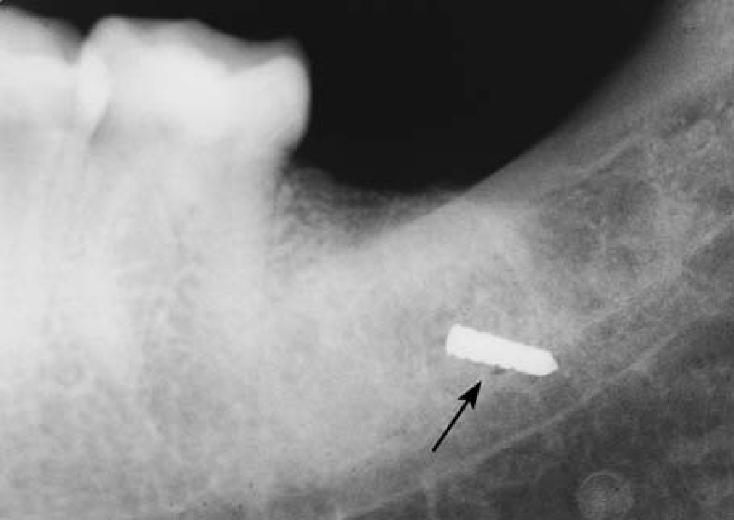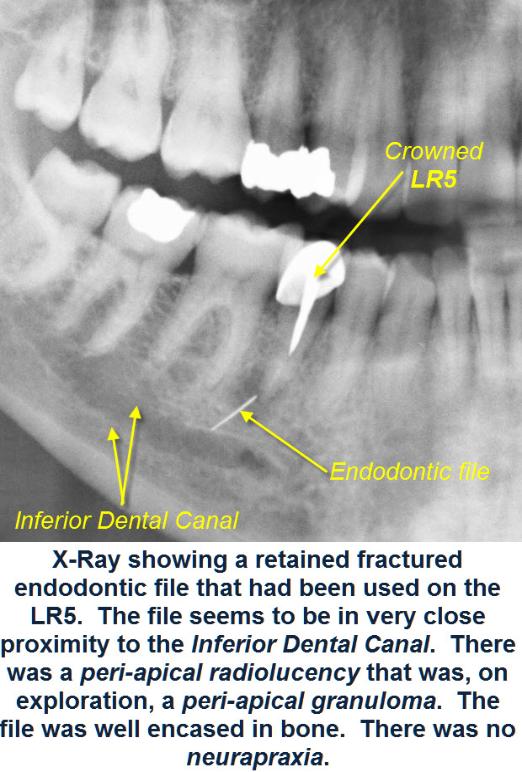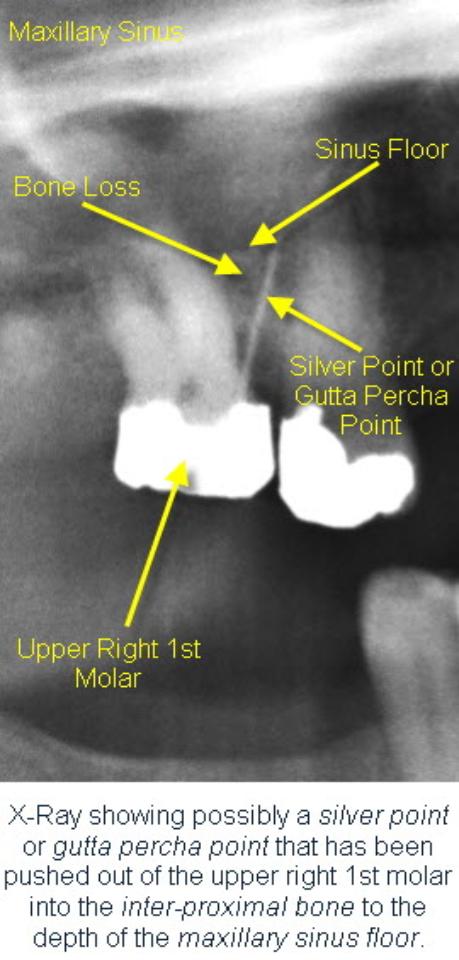Fracture / Failure of Instrument with Retention of Instrument Fragment within Bone / Soft Tissue
Any broken instrument should be removed at the time of the operation. If not retrievable, the patient should be told and this recorded in the notes.
Suture needles, hypodermic needles and surgical burrs are the items that most frequently fracture / fail in use. Suture needles are probably the commonest items to be broken during minor oral surgery.
As a general rule, all fragments of broken instruments should be removed immediately before they have time to migrate deeper into the tissues.
If the fragment cannot be found, radiographs in 2 planes at 90° should be taken of the operative area to locate it. At this point, a decision will need to be taken as to whether to remove the fragment or leave it in situ depending on its size and site.
Small fragments lying sub-periostealy can be safely left as knowledge of the local anatomy is essential if further complications are to be avoided. It should be remembered that small fine foreign bodies can be extremely difficult to locate and that blind exploration of tissue spaces is wont to displace them deeper. The use of image intensification can be very helpful in this situation.
Breakage of an instrument in the tissues is the result of excessive force during the removal of the tooth and usually involves the end of the blade of various elevators or of the instrument altering its metallic composition (mainly of the bur). In these cases, after precise radiographic localisation, the broken piece(s) are removed surgically at the same time as extraction of the tooth or root.





